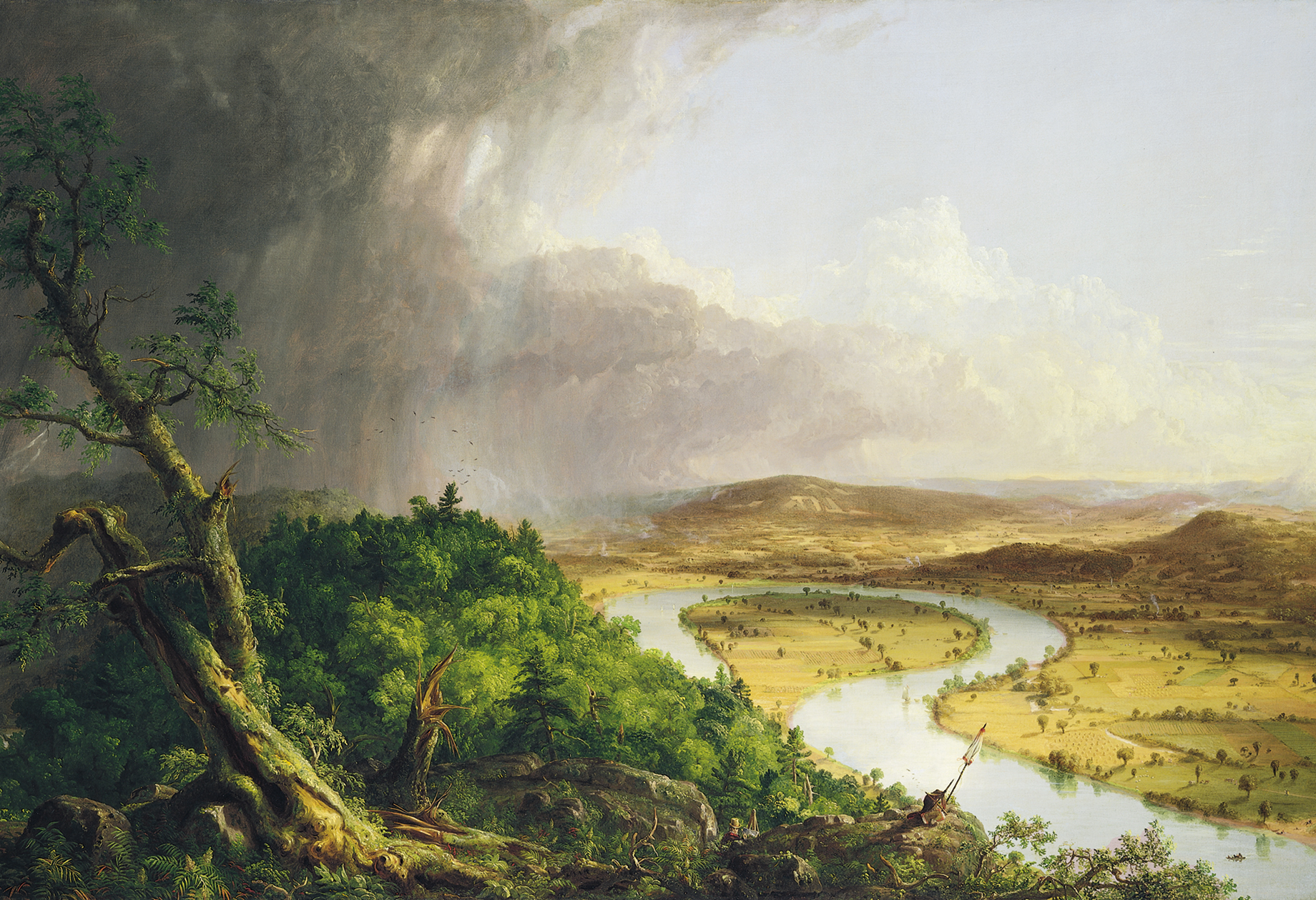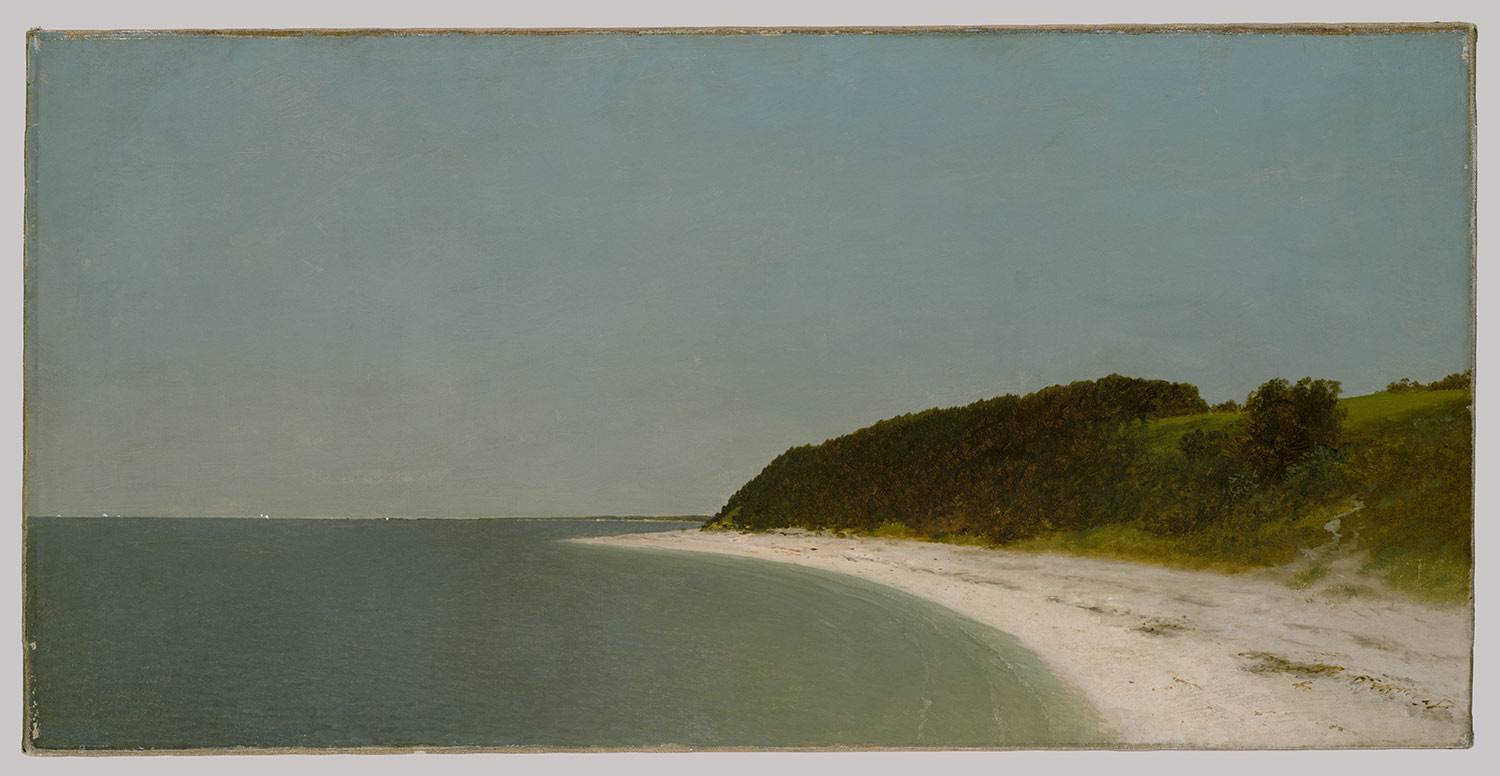
Thomas Cole (1801–1848), The Oxbow, View from Mount Holyoke, Northampton, Massachusetts, after a Thunderstorm, 1836.
One of my favorite rooms in the entire Metropolitan museum of Art is the Hudson Valley River Paintings. These 1800's American landscapes capture the vast romanticized beauty of nature. There purpose was to show nature and humans peacefully coexisting in these newly settles environments, which was believed to be an ineffable manifestation of god. Painters would often do various sketches of different subjects and later compile them together in their studio because conditions were often too harsh to paint outside.
The manor in which Cole captures this majestic expanse is absolutely breathtaking. The clouds above are displaying natures' temperament; although she can be angry there is beauty within the horrid conditions.
Seeing the large size of this painting, 51.5" x 76", aids his purpose of displaying natures seemingly endless essence. Even though there are boarders and a picture frame, the way Cole cuts off some of the large broken tree shows that there is so much more to what we the viewers are actually seeing. Nature is so vast that it grows beyond the restrictions of the canvas and the artist knows that.
The manor in which Cole captures this majestic expanse is absolutely breathtaking. The clouds above are displaying natures' temperament; although she can be angry there is beauty within the horrid conditions.

John Frederick Kensett (American, 1816–1872)
Oil on canvas; 18 x 36 in. (45.7 x 91.4 cm)

"Long Island's north shore near Huntington in Suffolk County, would have required an hour long sail or more across the Long Island Sound from Kensett's studio off Darien, Connecticut."
Continuing my browsing in American landscape paintings, my eye wondered to this particular piece and I immediately said
"That looks like Long Island!"
When I reached the information tag, what do you know, it is Long Island. That to me was an amazing experience in itself to be looking at a local area that was painted as seen in the mid 19th century.

No comments:
Post a Comment